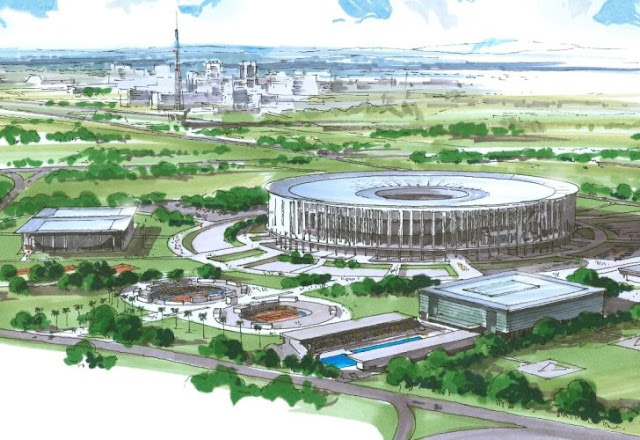Brasília, Brazil’s mid-century capital, will have a new football stadium by the end of this year that will showcase several green building features. With the 2014 World Cup not far off, Brazil has much work to do as it proves to the world that it can host two major international sporting events. To that end, the remodeled Estádio Nacional de Brasília (Brasília National Stadium) and its lead architect, Castro Mello, will show that Brazil is more than ready to shine on the global sporting stage.
is to eliminate negative environmental impact completely through skillful, sensitive design
Tuesday, July 3, 2012
Brasília’s Remodeled National Stadium Will Be a Solar Showcase For The 2014 World Cup !
Brasília, Brazil’s mid-century capital, will have a new football stadium by the end of this year that will showcase several green building features. With the 2014 World Cup not far off, Brazil has much work to do as it proves to the world that it can host two major international sporting events. To that end, the remodeled Estádio Nacional de Brasília (Brasília National Stadium) and its lead architect, Castro Mello, will show that Brazil is more than ready to shine on the global sporting stage.
Subscribe to:
Post Comments (Atom)
-
Studios Architecture has designed a new green office, meeting, and exhibition space that aspires to become a hub of sustainability in the S...
-
Baca Architects and ZM Architecture have teamed up with Floating Concepts to design what has been dubbed the world’s first “ float...













No comments:
Post a Comment